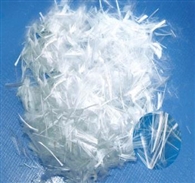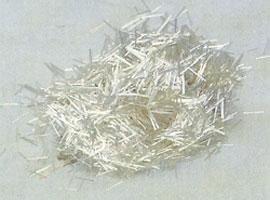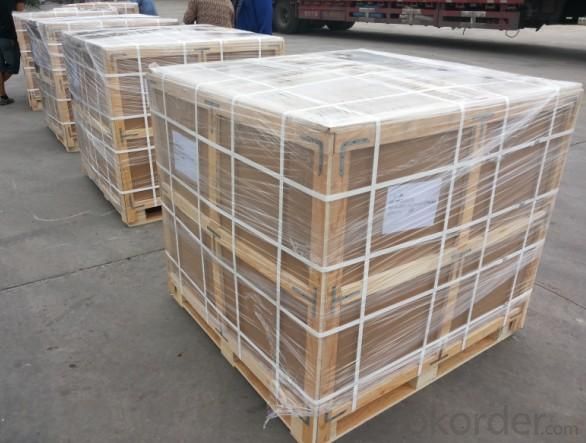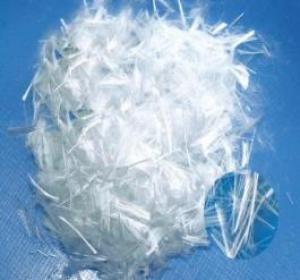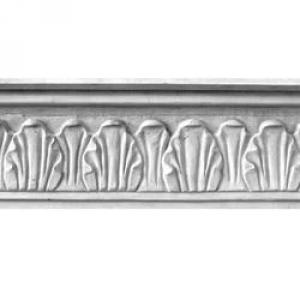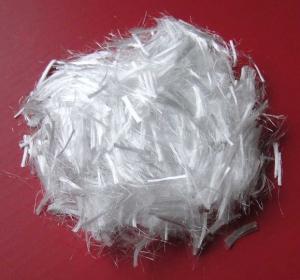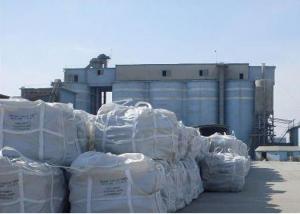Polypropylene Staple Fiber
- Loading Port:
- China Main Port
- Payment Terms:
- TT or L/C
- Min Order Qty:
- 3000 Kgs kg
- Supply Capability:
- 100000 Tons Per Year kg/month
OKorder Service Pledge
OKorder Financial Service
You Might Also Like
Commodity: Industrial PP Fiber for Concrete, Engineering Fiber
PP fiber,also called Polypropylene PP Fiber, Polymer Fiber,it is manufactured by mixing, spinning, stretching and cutting the combination of modified base and polypropylene paring, used as the project fiber for concrete and mortar. It can decrease cracks in concrete's early stage.
Property of Polypropylene Staple Fiber:
| Polypropylene monofilament fiber technical | ||
| Item | Product name | PP fiber |
| 1 | Material | 100% polypropylene |
| 2 | Cut length | From 3mm to 120mm |
| 3 | density | 0.91g/cm³ |
| 4 | Diameter | 20 micron to 40micron |
| 5 | Strength | 400-600Mpa |
| 6 | elongation at break | 30%-40% |
| 7 | melting point | 170°C |
| 8 | ignition point | 590°C |
| 9 | Oil point | lower than 1% |
| 10 | Water-hygroscopicity | No |
Advantages of Polypropylene Staple Fiber:
Good dispersancy, better grip
Random dispersal, subordination reinforced
Physically-added tendon, anti-crack and high reinforcement
Diamagnestism and antirust, corrosion protection and alkali resistant
Innocuous and odorless, safe
Simple operation, more economic and dependable
Function of Polypropylene Staple Fiber:
Anti-crack
Increasing seepage-proof performance
Anti-concussion and anti-wear performance
Increasing shock proof
Cold-resistant property
Enhance the property of toughness and ductility
Fire resistance and anti-detonation quality
Preventing or reducing the major reinforcing steel bar from being eroded
Reducing rebound of jetting concrete
Application:
Industry and Civil Architecture
Main body of road, bridge
Water conservancy project
Package:
A: Packing in plastic bags, plastics bags to be put into waterproof bags, and then waterproof bags to be put into container, totally 8 tons in 1x20'FCL
B: Packing in fusible paper bags, paper bags to be put into cartons, and then cartons to be put into pallet, pallets to be put into container, totally 6 tons in 1x20'FCL.



- Q: why are cement factories important for the economics in uae?
- cement is one of many things that are necessary for oil production and all construction.
- Q: When building a green house, it is important for it to be cool in the summer and warm in the winter. Of course, to do this, energy is required, but to make if energy efficient, a dirt floor might be better, as this would allow for heat production from the earth. However, dirt is not a good insulator, but cement is, so concerves the heat better. What do each do to cold?
- cement
- Q: and it was lumpy can i still use it or will the lumps interfer with the leveling process, ( and how liquidy should i make it) i experimented with a little amount and it just didn't look right so i threw it out.. it's the firt time i'm using a self leveling product
- I don't know a lot about that, but it seems that you may need it quite thin, so it will run as needed to self level. apply the leveling cement in shallow layers, (less then 1/2 inch each) or it will when drying as it has so much water in it. To get the lumps out try some thing on a power drill to mix it faster. They sell small beaters to use on a power drill for that.
- Q: I have a large basement with cement floor and walls. I want to convert it into a game room, for a pool table, foosball, etc. What is the best thing to do with the walls? I think I want to paint them and possibly do some stencil work of sports logos, etc. (Don't really want to use drywall, etc as it CAN get mildly damp down there when we have local flooding) What is the most durable paint that can be used on cement that comes in colors that would work in a game room?
- Go to you local home store and get a concrete sealer/primer. Put that on first. Then you will have nearly unlimited color options for a finish coat of paint.
- Q: advisable storage method of cement?
- Not sure I understand the question - Is it a ready mix powder, already mixed and you want to keep it so it can be applied later, or hardened cement that you want to dispose of? if A) Ready mix powder can be stored in any water tight container (bag, box or barrel). B) Mixed powder must be applied before the curing sets in. From the moment you add the water, the curing starts. Curing in cement is aided by water, not by oxygen. So unless you can freeze the mixture, it will be very difficult to slow, much less stop the curing process. So, for all practical purposes, you cannot store cement. Think of curing like a bucket of chain links - at first all the links are separate and you can easily stir the bucket (well, OK - lets assume these are small chain links...). But as the curing proceeds, the chain links connect with each other. So no imagine that you try to stir the bucket of linked chain. Even if the links are only 50% linked (meaning there are still 50% of the links with not even their first link completed) the bucket becomes progressivelyy hard to stir, until eventually you just have a bucket of metal links all attached to each other - You would be able to stir or re-shape it anymore. C) Lastly if you want to dispose of cured cement (say after your done working) it can be disposed of in the regular trash, but many cities like you to bring it to the dump vs having your plastic trash bin suffer the effects of a heavy, sharp-edged object being tossed around in it as well as the safety issue it poses to the trash collection worker.
- Q: I am building a shower an i have don all the plumbing and have put down my pvc 40 mil liner. I do not know what cement to use and how to mix it for my pan so I can lay my till.
- Some fine grain quickcrete will do fine. Follow the directions accurately and you will be fine.
- Q: what is the difference between cement and concrete ?
- Cement is one of the ingredients used to make concrete. In other words concrete is the final product of which cement is used with other ingredients to make it. The mixup in terms is widespread. The DIY tv shows always misuse the terms such as this. They call concrete Blocks - Cinder blocks and Cement Blocks. The architectural term of *CMU means Concrete Masonry Unit. The also say Masonary - it's not Masonary it is Masonry - no *A after the n. The term Cement Finisher is correct in construction terms - however they are actually finishing concrete. Cement is an ingredient of Mortar also as well and of Thinset mortar for ceramic tile. So cement is an ingredient of a lot of products. The most prominent one is Concrete.
- Q: Took out old ceramic tile that was embedded in concrete. Older home original tile. Now there is a big hao between the floor and walk 2 DIFFERENT sizes.Most of the Flor is 1 inch 3mm. There is another srip that runs behind vanity that a 2quot;. The new tile is small square and only maybe 1/4 in thick I d that.Is there 1quot; cement board? What do I do if there is a gap between tile and floor wall? I do t want water getting in from mopping or wet making mold. Also what do I do about the part that is a larger hao by 1/2 in than rest of floor? See pictures.
- Well to start, I would prep the floor by thin-setting and nailing/screwing cement board to the floor. Use a larger trowel (maybe 1/4x3/8) to help bridge the gaps for a solid bond between the wood and the cement board. Afterwards, use a self leveling compound to eliminate any uneven gaps and to raise the floor level to high high you need it. If the leveler will run under the house from the gaps, use tape or other materials to keep it from flowing through. Use as much leveler as you need to make the height where you desire...and and easy job tiling with the new level floor.
- Q: I really want my hair to grow ! it is a little past my shoulders very thick ! I'm so sick of it ,this length. it feels like Ive had this length for forever. So my friend bought so hair cement for her hair, I was thinking about buying some for me! does it work? is it expensive? My main question is does it workk period? Hope to hear from you ! :)
- No. Hair has its own timetable and a heavy duty setting gel will not make it grow faster. Hair cement is a heavy duty hair styling product designed to hold hair in just about any position with stiff results, withstanding wind, light rain, and even sleep. It can defy gravity and is specifically made for spike-type hair styles. This styling product is a paste-like substance that is delivered most commonly in a tube or a pot, but some manufacturers carry the product in a spray bottle or foam canister. Some brands include a temporary color in the paste, which can add a fun touch of color to a hairstyle.
- Q: What three substances are mixed with cement to make concrete?
- Sand, gravel and water.
1. Manufacturer Overview
| Location | Shanxi, China |
| Year Established | 1982 |
| Annual Output Value | Above US$ 30 Million |
| Main Markets | 20.00% North America 20.00% South America 10.00% Eastern Europe 10.00% Southeast Asia 10.00% Northern Europe 10.00% South Asia 10.00% Western Europe 5.00% Africa 5.00% Mid East |
| Company Certifications | ISO9001:2000 |
2. Manufacturer Certificates
| a) Certification Name | |
| Range | |
| Reference | |
| Validity Period |
3. Manufacturer Capability
| a) Trade Capacity | |
| Nearest Port | Shanghai Port, China |
| Export Percentage | 41-50% |
| No.of Employees in Trade Department | 20-30 People |
| Language Spoken: | English; Chinese; |
| b) Factory Information | |
| Factory Size: | Above 50,000 square meters |
| No. of Production Lines | Above 10 |
| Contract Manufacturing | Design Service Offered; Buyer Label Offered |
| Product Price Range | High; Average |
Send your message to us
Polypropylene Staple Fiber
- Loading Port:
- China Main Port
- Payment Terms:
- TT or L/C
- Min Order Qty:
- 3000 Kgs kg
- Supply Capability:
- 100000 Tons Per Year kg/month
OKorder Service Pledge
OKorder Financial Service
Similar products
Hot products
Hot Searches
Related keywords



